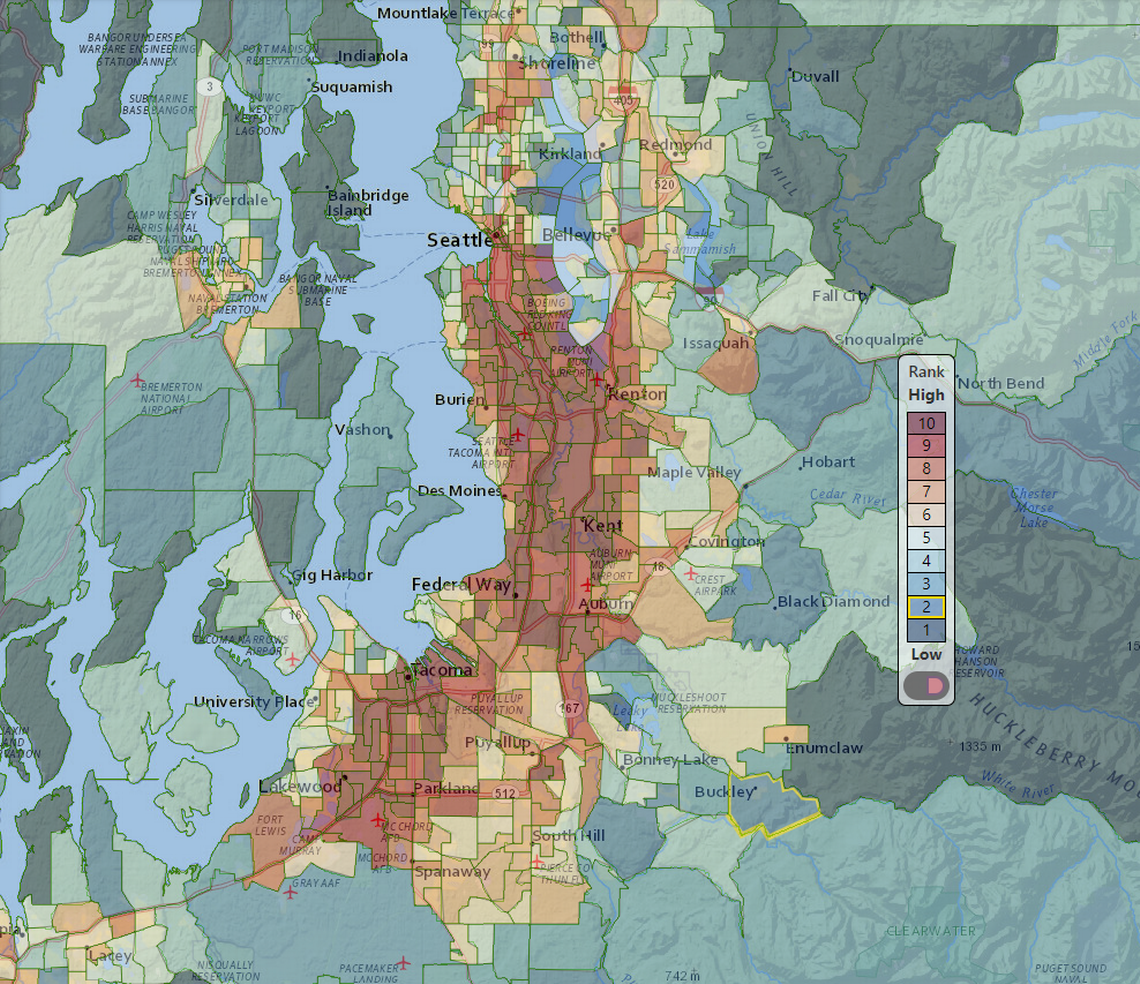How bad is Tacoma’s air? Statewide plan to tackle areas of worst pollution, smoke
The Puget Sound Clean Air Agency released its strategic plan to address climate and air quality issues through 2030. One goal is to direct efforts toward shrinking disparities between air pollution in communities.
“With the growing urgency to combat climate change and the opportunities available due to new policies at the state and federal level, we are excited to get started in implementing this thoughtful and progressive plan,” said Christine Cooley, executive director of the Puget Sound Clean Air Agency, in a news release. The agency oversees air quality in Pierce, King, Snohomish and Kitsap counties.
In the report, the agency said its main goals are to protect and improve air quality in public spaces, protect the climate by reducing greenhouse gas emissions, and reduce air pollution disparities. Specific objectives include reducing:
Air pollution by 20%.
The annual economic impact of air pollution health effects by at least $500 million to $1 billion.
Cancer risk from toxic air pollutants by 50%, with an emphasis on overburdened communities.
Socioeconomic disparities in air pollution exposure by 50%.
Puget Sound area’s greenhouse gas emissions by 50% compared to levels from 1990.
The Environmental Protection Agency sets, reviews and revises the standards for air pollutant regulation, per the Clean Air Act. There are six criteria pollutants that the EPA works with local agencies to minimize:
Ground-level ozone
Particulate matter
Carbon monoxide
Lead
Sulfur dioxide
Nitrogen dioxide
The agency will host a public information session from 5:30 to 6:30 pm on Wednesday, March 15. Officials will summarize the public input heard throughout 2022 and how it is incorporated into the plan.
What is causing WA air pollution?
The Puget Sound region has experienced an increasing amount of wildfire smoke since 2015, according to the Clean Air Agency’s report. Wildfire smoke disperses fine particulate matter pollution into the air to hazardous levels.
Air pollution is caused by other individual and industrial activities, according to the Department of Ecology. That includes vehicle emissions, heating homes with wood, diesel and carbon pollution.
How is air quality around Puget Sound?
The Puget Sound region meets the standards for healthy air quality, according to measurements of the six criteria pollutants from the DOE. The department considers an area to have clean air if its air-quality index, which measures levels of particulate matter, ranges from 0-50.
That wasn’t always the case. The DOE states on its website that 13 areas across Washington didn’t meet adequate air quality standards during the mid-1990s. The Evergreen State was able to reach quality standards by 2005.
From 2009 to 2014, the EPA designated the Tacoma-Pierce County region as having unsatisfactory levels of particulate matter in the air, according to federal standards.
Environmental health disparities in Pierce County
The Washington State Department of Health has an interactive map that shows where environmental health disparities are highest across the state. The map illustrates where there are inequalities in environmental exposures, like diesel emissions, ozone and particulate-matter concentration, and toxic releases from facilities.

A quick look at the map shows that health disparities are most prevalent throughout high-population cities. It’s most notable stretching north to south along Puget Sound. Areas most affected include most of Tacoma and the Seattle metropolitan area.
Besides Puget Sound Clean Air Agency, the DOE said Wednesday it’s increasing efforts to address poor air quality in overburdened communities. The department said it’s specifically looking to increase air monitoring in these cities and regions disproportionately impacted by criteria air pollutants:
Ellensburg
Everett
George and West Grant County
South King County
Mattawa
Moxee Valley
Northeast Puyallup
North Seattle and Shoreline
South Seattle
Spokane and Spokane Valley
South and East Tacoma
Tri-Cities to Wallula
Vancouver
Wenatchee and East Wenatchee
East Yakima
Lower Yakima Valley
